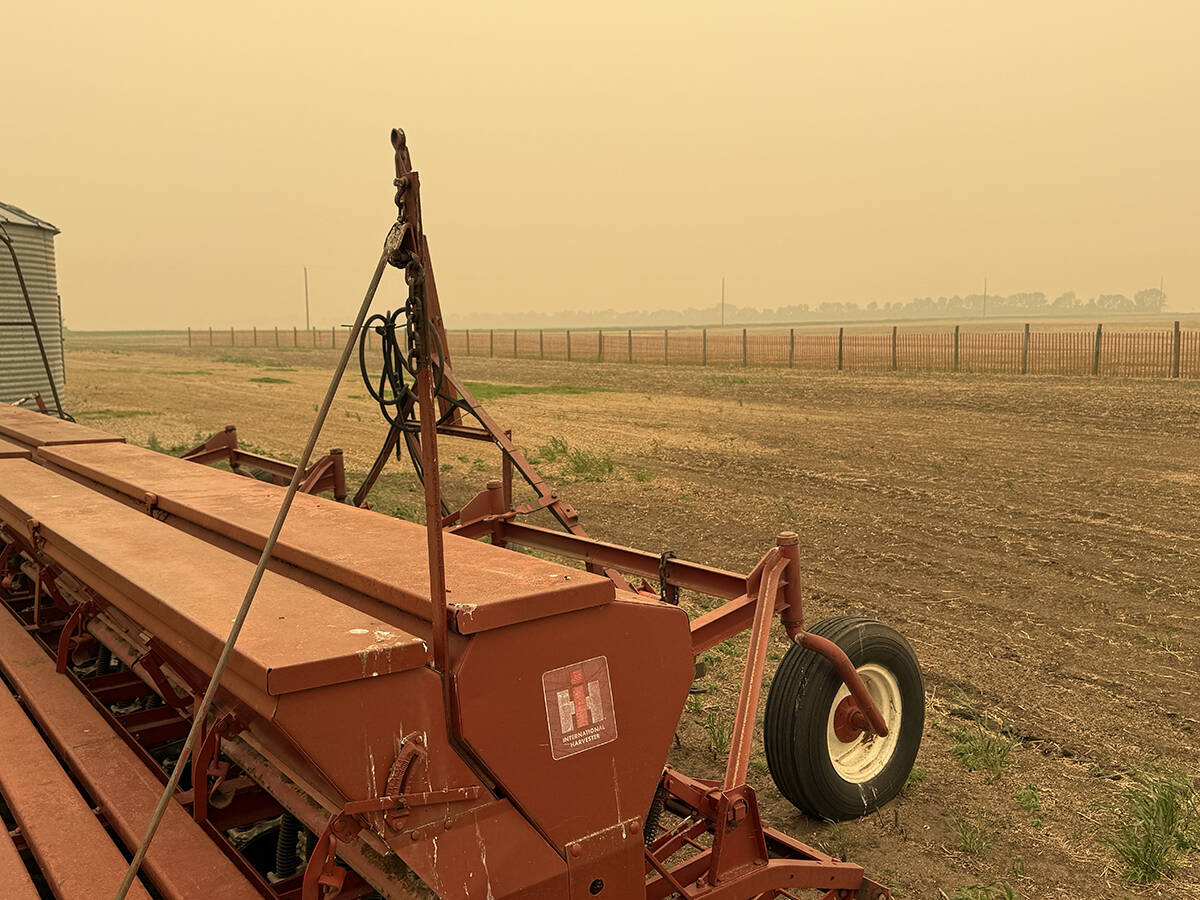When Ueli Messerli went to find out more about Manitoba’s new manure regulations at a meeting in Beausejour last week, he expected he’d get the chance to hear the views of farmers, government representatives and other concerned people.
But instead Messerli learned a bit about the government’s new open house approach to consulting the public. Government staff answer questions and listen to concerns from the public individually and informally, rather than in a meeting format.
“To me, that is complete b.s.,” Messerli steamed into a microphone during a more traditional question-and-answer session at Keystone Agricultural Producers’ annual meeting.
Read Also

Wildfires have unexpected upside this year
One farmer feels smoke from nearby wildfires shrouded the July skies and protected his crop from the sun’s burning rays, resulting in more seeds per pod and more pods per plant.
“Sorry to use that word, but that’s what it is.”
The provincial government recently used the same open house approach for a series of public consultations on drainage issues across the province.
“You don’t get to hear what questions or complaints the other producers have,” noted Messerli. “What do those people have to hide? What is so secret?”
Messerli raised his concerns with agriculture minister Harry Enns, who said he was surprised with the open house concept. Enns, a veteran of the public meeting format, said he’d make some calls to Manitoba Environment officials, who organized the open houses.
“I agree with you totally,” Enns told Messerli.
But it was representatives of the hog industry who suggested the open house format, said Andrew Dickson, a regional director with Manitoba Agriculture who has helped the environment department with its review.
He assured farmers that the people developing the regulations want to hear their views.
“We are all ears,” said Dickson. “We want to do this right.”
Dickson told Messerli the industry wanted to avoid the stacked meeting situation where hundreds of people show up yelling and shouting.
“Unfortunately, in rural areas, farmers are not the majority group anymore,” said Dickson.
KAP later passed a resolution to lobby the government to properly consult with farmers on the new manure regulations, which are supposed to come into effect by April 1.
The regulations give more clout to the environment department to deal with manure pollution.
They will require about 1,100 of Manitoba’s 17,000 livestock operations to file annual manure management plans and prevent large operations from spreading manure on fields during winter.
Dickson said Manitoba livestock produce 18 million tonnes of manure a year to be spread over 12.5 million cropped acres. “We have lots of room here,” he noted.
The nutrients in the manure are worth about $130 million, half the value of commercial fertilizer used in the province, he said.
Enns told KAP he plans to act as a watchdog on the province’s environment department on the new manure regulations.
He also promised to arrange and attend a meeting with KAP members and Jim McCrae, the environment minister.














